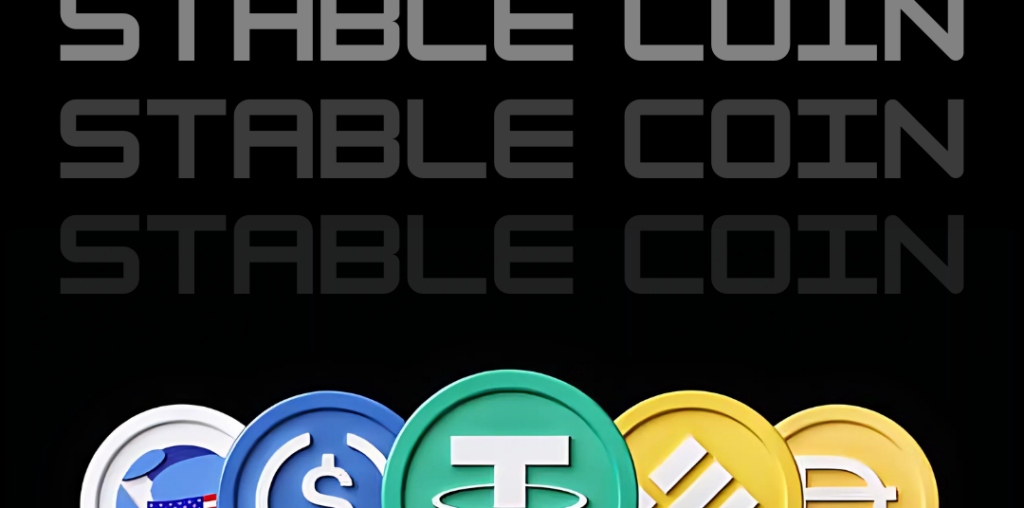In our first episode, we explored what stablecoins are—their role as digital assets designed to maintain a stable value by being pegged to real-world assets like fiat currency, commodities, or even algorithms.
But today, we’re going deeper. We’re peeling back the curtain and diving into the fascinating world of how stablecoins actually work behind the scenes. If you’ve ever wondered, What keeps a stablecoin truly stable? or What happens when people buy, sell, or redeem them?—then this episode is for you!
So, grab your coffee, get comfortable, and let’s break it all down! ☕🎧
1. The Foundation of Stability – How Pegging Works
Stablecoins are built on one essential promise: stability. But how do they actually maintain that? The answer lies in collateralization and market mechanisms.
There are three main ways stablecoins maintain their peg:A. Fiat-Backed Stablecoins (The Traditional Approach)
These stablecoins are backed 1:1 by real-world assets, usually fiat currencies like the US dollar or Euro.
- For every 1 USDT (Tether) or 1 USDC (USD Coin) issued, there is $1 held in reserve.
- This reserve could be in cash, treasury bonds, or other low-risk investments.
🔍 What Happens Behind the Scenes?
- When you buy 1 USDC, the issuing company (like Circle or Tether) deposits $1 into its reserves and mints a new token.
- When you redeem 1 USDC, the company burns the token and gives you $1 in cash back.
- The idea? You always know your stablecoin is worth exactly $1 because it’s backed by real money.
But here’s where things get tricky… not all stablecoins are fully backed in cash. Some hold reserves in commercial paper or even crypto assets, which can cause instability when markets crash. (Remember the Terra/Luna disaster? We’ll get to that soon!)
Want to Create your own Stablecoin then check here >> Stablecoin development company
B. Crypto-Backed Stablecoins (Decentralized But Risky)
Fiat-backed stablecoins are great, but they require trust in a central company. What if you want a decentralized alternative? That’s where crypto-backed stablecoins come in!
Take DAI (from MakerDAO)—one of the most well-known decentralized stablecoins.
- Instead of dollars, it’s backed by Ethereum (ETH) and other crypto assets.
- To keep it stable, it’s over-collateralized—meaning for every $1 DAI, there’s more than $1 worth of ETH locked up.
🔍 What Happens Behind the Scenes?
- If you want to mint $100 worth of DAI, you might need to deposit $150 worth of ETH into a smart contract.
- Why more than 100%? Because crypto is volatile! If ETH crashes, the system automatically liquidates assets to maintain DAI’s value.
This keeps the system secure, but it also means that users must trust smart contracts and manage their collateral carefully.
C. Algorithmic Stablecoins (The High-Tech Experiment)
Now, here’s where things get really interesting—and risky.
Algorithmic stablecoins aren’t backed by fiat or crypto. Instead, they use smart contracts to control supply and demand.
Example: TerraUSD (UST) (before its collapse 😬).
- The system worked by minting and burning tokens dynamically.
- If the price went above $1, the system minted more UST to reduce value.
- If the price fell below $1, the system burned UST to create scarcity and push the price back up.
🔍 The Problem?
Without real assets backing it, these systems can collapse under pressure. And that’s exactly what happened with UST in 2022—leading to billions in losses for investors.
So while algorithmic stablecoins sound like futuristic finance, they’re also the most unstable of all stablecoin types.
Check here >> Make money with Stablecoins
2. What Happens During a Market Crash?
Now, let’s talk about what happens when the crypto market goes wild.
- Fiat-backed stablecoins usually hold up well—because they have actual reserves to back them.
- Crypto-backed stablecoins might see liquidations, but over-collateralization helps maintain their peg.
- Algorithmic stablecoins? If confidence is lost, the whole system can break down.
Example:
During the 2022 market crash, many investors rushed to redeem USDT for cash. Since Tether had enough reserves, they processed billions in redemptions without losing the peg.
Meanwhile, UST collapsed overnight, wiping out billions. The lesson? Not all stablecoins are created equal.
3. The Future of Stablecoins – Regulation and Adoption
Governments worldwide are now paying close attention to stablecoins. Why?
- They move billions of dollars daily.
- They could disrupt traditional finance.
- Some projects (like UST) have caused major financial losses.
Many countries, including the US, UK, UAE, Russia, Turkey, and Vietnam, are working on stablecoin regulations to make sure these assets are safe and trustworthy.
At the same time, banks and financial institutions are starting to use stablecoins for cross-border payments, making transactions faster and cheaper than traditional banking systems.
We’re heading toward a world where stablecoins could power everyday payments, online transactions, and even national digital currencies.
Final Thoughts – Why This Matters to You
Stablecoins are more than just crypto tokens—they’re the backbone of the digital economy. Whether you’re a trader, investor, or just crypto-curious, understanding how stablecoins work behind the scenes is key to making smart financial decisions.
And speaking of smart decisions—during my research, I came across one of the best stablecoin guides that really caught my attention. It breaks down the risks, benefits, and technical aspects in a way that’s easy to understand. If you’re serious about crypto, this guide is a must-read!
That’s it for Episode 2! Stay tuned for Episode 3, where we’ll dive into “How to Create Your Own Stablecoin and Launch It Successfully.”
🚀 Until next time, stay curious, stay informed, and keep exploring the world of crypto!
🎙️ This is Jamiee Lucas, signing off.


